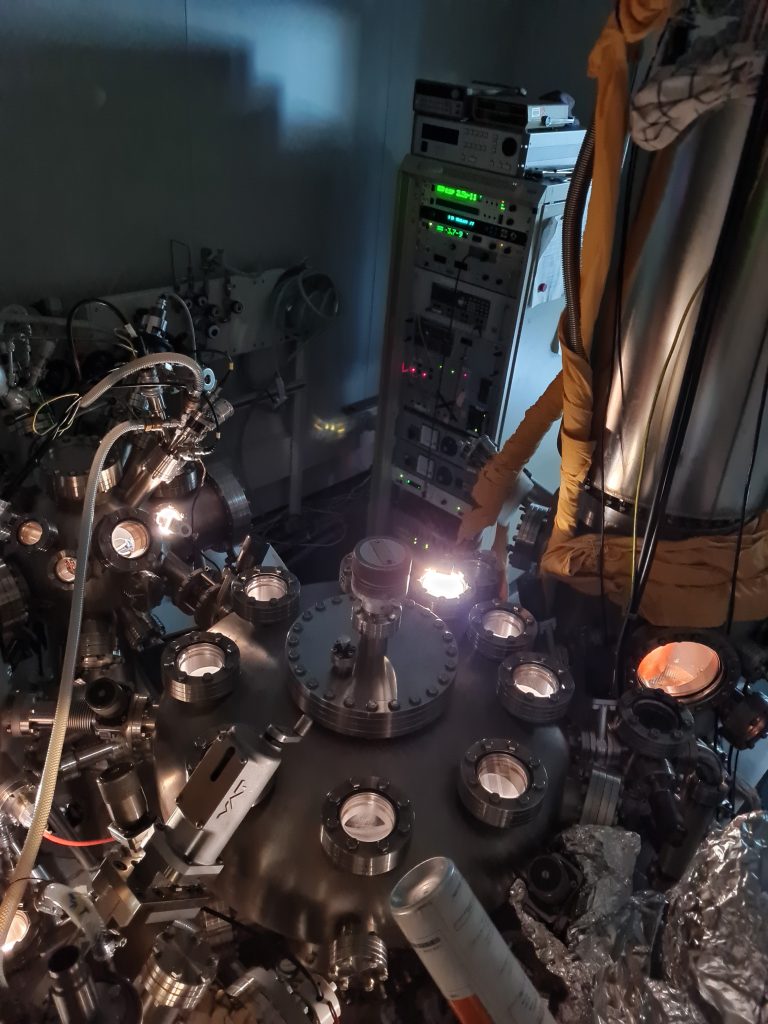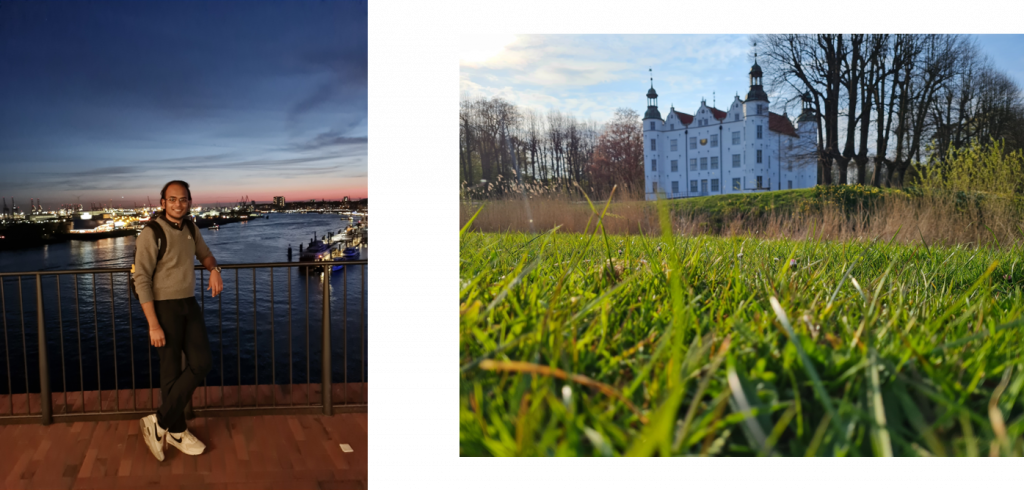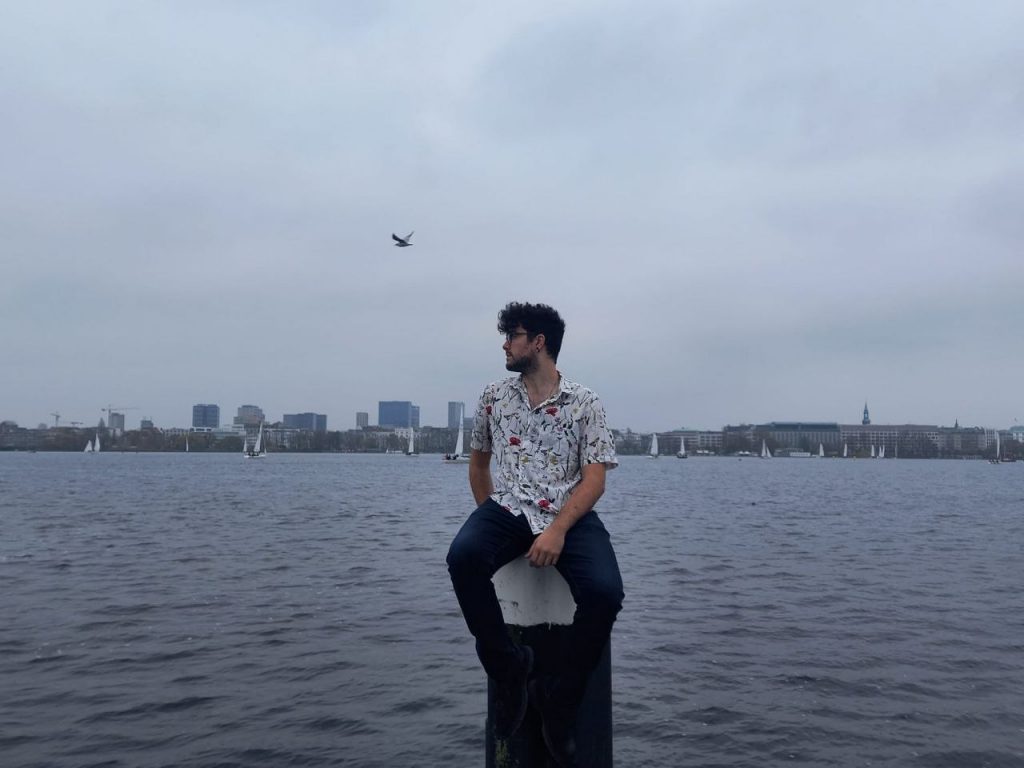How do microscopes work?
Each type of microscope uses different ways of obtaining information from the sample they are studying. Classical optical microscopes use light to probe the samples, this of course has its limitations, as light is just visible between certain wavelengths. This means that just objects slightly smaller than those wavelengths can be observed with them, setting the minimum observable distance with them at around 200 nm. Therefore, with this kind of microscopes we can study cells or other biological systems which are bigger than this distance, but we cannot obtain information of smaller things such as atoms.
But what if we want to observe these smaller things? One possible solution for that is using particles with smaller wavelengths as probes. This typically means using more massive particles, as the wavelength decreases when the mass increases. One of the easiest ways to do that is using electrons as waves, the microscopes that do that are called electron microscopes, and the most used ones are transmission electron microscopes (TEM) and scanning electron microscopes (SEM). With this kind of microscopy, it is possible to resolve objects down to around 15nm (High resolution TEMs (HRTEM) can reach 0.05 nm under very special conditions).
But there is another big family of microscopes. This is the scanning probe microscopy (SPM) family, to which STM belongs. All the techniques inside the SPM family are characterized for approaching the tip of the microscope to the sample to obtain information from it in different ways and then scan with it to form a complete image. Every technique inside this family uses different physical properties to work, and the property that STM uses is the quantum tunnelling effect (hence the name). With STM, features smaller than 0.1nm can be resolved horizontally, and 0.01nm features regarding depth. These values are especially useful as atoms have a typical size of around 0.3 nm, which means that STMs can achieve atomic resolution.

The quantum tunnelling effect
STMs use the quantum tunnelling effect as their principle of operation. This is a purely quantum mechanical effect that allows a particle to go through a potential energy barrier. If we make a comparison with the classical day by day world, it would be as if someone would go through a wall as a ghost, without interacting with it. This effect is related with the wave properties of the particles in the nanoscale, and the probability of it happening decreases the thicker the barrier is (the thicker the wall is for the ghost) and the bigger the particle is. What kind of particles are we talking about then? Well, some of the smallest particles that we humans know how to work with are electrons, so those will be the particles used in our STMs. And, what is a barrier for these electrons? A barrier is anything the electrons can’t go through. That can be an isolator such as plastic or wood, or in this case, the absence of anything, the vacuum.
If we apply a difference of potential in a wire, the electrons should be able to travel through it. But if we then cut the wire in the middle, the electrons will stop flowing from one side to the other. We will no longer have a current. The quantum tunnelling effect tell us that if we now put the two extremes of the wire really close (less than one atom of distance from one another), the quantum properties of the electrons will allow them to “jump” from one wire to the other quite often. The electrons will “tunnel” through the empty space and will reach the other cable, and the movement of electrons is a current, so then we will observe a current in our basic circuit even though it is not closed. As we know that the probability of tunnelling decreases when the barrier increases, if we separate our wires a little, the current will decrease, and if we put them closer it will increase. It will reach the maximum current when the wires touch, when we will observe the normal current that we had when the wire was not cut.

So how does a STM work then?
Let’s imagine our theoretical circuit already cut in the middle. The only important things here are the wires and the gap in between them. The wires are made out of metal and the gap is made out of nothingness. Perfect. Now we want to see tiny things with this setup, so the first thing is choosing what we want to see; that’s the sample. The sample is going to be attached to one of the cut sides of the wire, which makes of it just the new end of the wire as it is also metallic. Then we take the other cut side and we sharpen it. We sharpen it the best we can until the very tip is just one atom thick; this is our tip. If we now approach the tip and the sample we will get the same thing that we got before with the two cut wires: some current going through due to the tunnelling effect when really close, but there is a difference, our tip is now one atom thick. This means that if we now move to the side we can observe the current in a different atom. We can keep moving the tip sideways keeping it at the same distance of the sample all the time (this means making sure we let the same current go through the vacuum), but sometimes the sample will have holes (so we will have to approach the tip) or mountains (so we will have to retract the tip). If we keep track of how do we have to move the tip to keep the current constant, we will get lines of the topography of the sample! If we stack several lines of the topography, this is, if we scan the surface of the sample, we will get complete three-dimensional images of the sample!
Of course, all the details about how to keep the wires so close without touching, how to move the tip sideways, how to read the currents, etc. are complex issues that require high level engineering to be solved, but those are not the things that explain how a STM works. Many other things have to be done to properly obtain images out of these microscopes, for example, due to the close distance between tip and sample, it is necessary to have damping systems in order to decouple the microscope from any kind of vibration that could crash the tip into the sample.


References:
Figure 1: Philippe Crassous / FEI Company (www.fei.com)
Figure 2: https://cosmosmagazine.com/science/physics/quantum-tunnelling-is-instantaneous-researchers-find/







